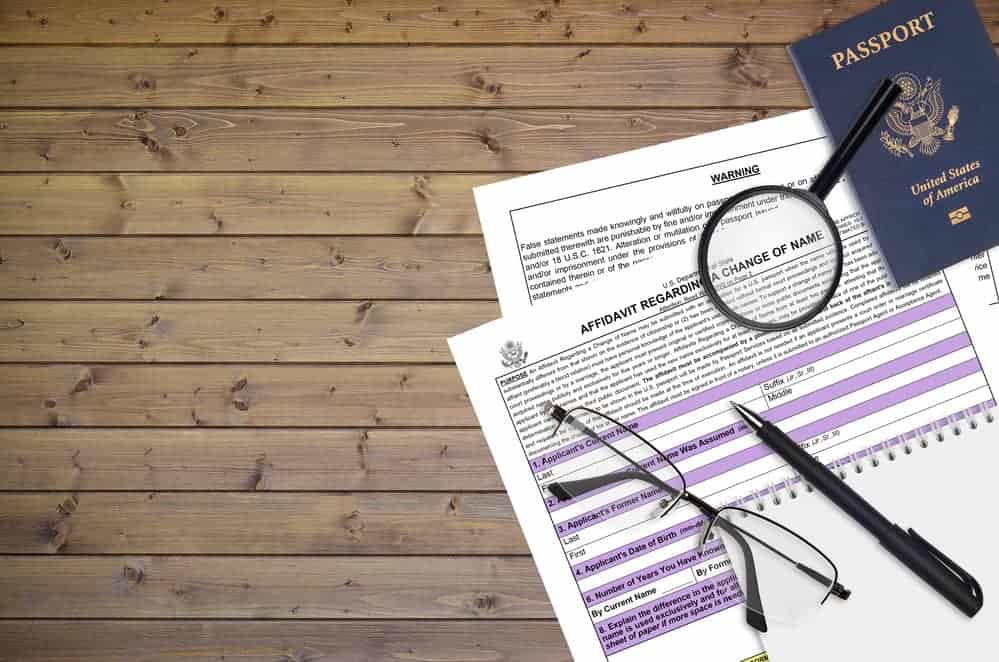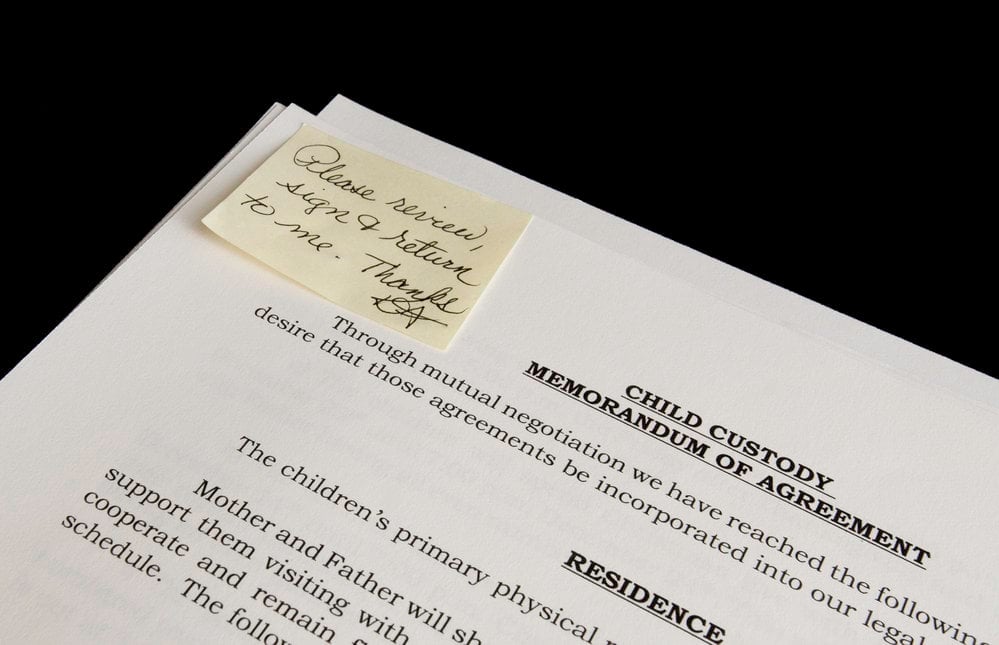Going through a divorce can be a challenging time in anyone’s life, often bringing about significant changes. One such change many individuals consider is reverting to their maiden name or choosing an entirely new name altogether. While the thought of reinventing oneself after such a tumultuous period might seem liberating and empowering, it’s essential to approach the process of a name change with a solid plan.
A well-organized name change checklist after a divorce can ensure a smooth transition into the next chapter of one’s life. This article will guide those considering a name change, providing valuable insights into the process and important factors to consider. From understanding the legal process to informing key individuals and institutions, this step-by-step guide will help you confidently and easily navigate your post-divorce name change.
Additionally, it’s crucial to remember that everyone’s journey and reasons for wanting a name change after a divorce are unique. Hence, customizing the checklist to one’s needs and situation is essential to accommodate diverse circumstances. The following information offers a practical starting point for those seeking a name change and lays the groundwork for a smooth experience.
Understanding the Name Change Process After Divorce
Legal Name Change vs. Reverting to Maiden Name
When going through a divorce, some individuals may change their name, either reverting to their maiden name or opting for a new legal name. Therefore, it is essential to understand the difference between these two options.
Reverting to a maiden name implies returning to the name used before marriage. This is commonly chosen by individuals who wish to detach themselves from their married identity. On the other hand, a legal name change is officially adopting a new name entirely, unrelated to either the married or maiden name.
Court Order for Name Change
Obtaining a court order for a name change after divorce involves several essential steps. It can vary depending on the jurisdiction; however, the process generally includes the following:
- Filing a petition: Submit a petition for a name change to the appropriate court, accompanied by the necessary supporting documents, such as a divorce decree and personal identification.
- Publication of the petition: Some jurisdictions require the publication of the name change petition in a local newspaper for a specific amount of time to notify the public and allow for possible objections.
- Court hearing: Attend a court hearing where a judge will review the petition, consider any objections or concerns, and decide whether to grant the name change.
- Updating records: Once the court has granted the name change, individuals must update their records with various institutions, such as the Social Security Administration, the Department of Motor Vehicles, and banks.
Following the proper legal procedures for a name change after divorce is crucial, as failure to do so may result in legal complications and difficulties in updating personal records. Each jurisdiction may have specific requirements, so it is essential to consult with a local attorney or court clerk for guidance.
Documents and Institutions to Update
Government-Issued Identification
Updating your government-issued identification documents after a name change due to divorce is necessary. Start with the Social Security Administration to get a new social security card, which will help update other documentation. Remember to update your passport, state ID, and driver’s license. Contact the Department of Motor Vehicles (DMV) for assistance with your driver’s license and state ID card. If you are enrolled in Trusted Traveler Programs such as TSA PreCheck or Global Entry, these must also be updated.
Financial Institutions and Accounts
Updating your name with financial institutions is essential to ensure access to your accounts and avoid complications. Accomplish the following tasks:
- Notify your banks and update your credit cards, checking, and savings accounts.
- Contact your investment firms to update the name on your investment accounts.
- Inform your mortgage provider and update other related documents.
Insurance
Contact your insurance providers to update your name on all insurance policies, including health, life, auto, and homeowners insurance.
Utilities
Update your name with utility companies to have accurate records on your utility bills. Also, remember to contact your water, electricity, gas, and internet providers and the United States Postal Service (USPS) to ensure you receive mail under your new name.
Other Services
Lastly, don’t forget to update your name on other important documents such as voter registration, birth certificate, and citizenship, as well as with other government agencies.
Completing the Necessary Forms and Applications
When changing your name after a divorce, a few key forms and applications must be completed. This section will briefly overview the necessary steps for each relevant organization.
Social Security Administration (Form SS-5)
To start the name change process, you should begin with the Social Security Administration (SSA). You’ll need to complete Form SS-5, the Application for a Social Security Card. This form can be found on the SSA website or requested at a local office. Make sure to include the following:
- Proof of identity (driver’s license, state-issued ID, or passport)
- Proof of the name change (divorce decree)
There is no fee for processing Form SS-5.
U.S. Passport (Form DS-11, Form DS-82, Form DS-5504)
Next, update your name on your U.S. passport. There are three different forms that you may need to submit, depending on your situation:
- Form DS-11 (application for a new U.S. passport): If you’re applying for a new passport due to a name change, follow the standard application process and include your name change documents, such as your divorce decree. The fee for this application varies based on the type of passport requested (e.g. adult, child, renewal, etc.).
- Form DS-82 (passport renewal application): If you already have a valid U.S. passport and need to update the name, submit this application. You must include your current passport, a 2×2-inch passport photo, proof of the name change (divorce decree), and the appropriate fee.
- Form DS-5504 (name change, data correction, or limited passport book replacement): If your passport was issued within the last year or requires any data corrections, use this form to update your name. Include your current passport, a 2×2-inch passport photo, and proof of the name change (divorce decree). There is no fee for this application.
Department of Motor Vehicles
Lastly, visit your local Department of Motor Vehicles (DMV) to update your driver’s license or state-issued identification card. The requirements and fees will vary depending on your state. Generally, you will need the following:
- Proof of identity
- Proof of name change (divorce decree)
- Completed application for updated license or ID
- Payment for the applicable fee
Completing these applications promptly is essential to ensure a smooth transition during your name change process.
Notifying Employers and Updating Payroll Information
After finalizing a divorce, you must notify your employer and update your payroll information to ensure accuracy in documents and filings. The first step in this process is to inform your Human Resources (HR) department about the changes in your personal information. This communication can be done through a formal letter, email, or a scheduled meeting with the HR representative.
Upon notifying the HR department, they will provide you with the necessary forms to update your payroll information. It’s essential to fill out these forms accurately and promptly. Some common changes you may need to address include:
- Changing your last name
- Updating your tax withholding status
- Adjusting your contact information, such as address and phone number
- Revising beneficiaries for insurance policies, retirement plans, and similar documents
In addition to updating your payroll information, you may also need to provide documentation to support the changes. This could include a copy of your divorce decree, a certified court order granting the name change, or other related documents. Submit these materials to the HR department to ensure a smooth transition.
Keep in mind that the process of updating your payroll information may take some time, and it is possible that your next paycheck might not reflect the updated information. Therefore, to avoid any financial complications, it’s advisable to monitor your payroll records closely and communicate with your HR department if any discrepancies arise.
By proactively notifying your employer and updating your payroll information, you are taking an important step in managing the impacts of your divorce on your professional life. This will help maintain the accuracy of your records and ensure that you can focus on your career without unnecessary distractions or complications.
Managing Personal Records and Accounts
Online Presence
After a divorce, it’s essential to update your email, social media accounts, and any other personal accounts with your new name. This helps maintain consistency across your professional and personal online presence. To change your name on social media platforms, follow the respective platform’s guidelines. You might also consider creating a new email address using your new name to reflect the change in personal and professional communications.
Address Changes
If you’ve opted to change your address after the divorce, update all relevant institutions and service providers. Begin by informing the United States Postal Service (USPS) of your address change, which will help redirect your mail to the new address. After updating USPS, notify important entities, such as banks, credit card companies, and utility providers, of your new address to avoid disruptions in service or notifications.
Personal Documents
Updating your name on personal documents is crucial after a name change. First, you’ll need to update your name with the Social Security Administration, which will also affect your tax records. Then, obtain a new driver’s license or state ID from your local Department of Motor Vehicles.
Make a list of other vital documents that require updating, such as:
- Passports
- Insurance policies
- Vehicle registration and title
- Voter registration
- Mortgage or lease agreements
Don’t forget to check your credit report after updating your personal information to ensure your financial records are accurate and up-to-date. Making these updates across various documents and accounts will help ensure a smooth transition after your divorce.
Child Support and Visitation Considerations
When going through a name change after divorce, it is essential to consider how this process may impact child support and visitation arrangements. Ensuring these matters are addressed properly can help maintain stability for the children involved.
Child Support: After a divorce, one parent may be required to provide financial assistance to the other parent, known as child support. This support is typically used to cover expenses related to the child’s upbringing, such as housing, education, and medical care. If a parent changes their name after the divorce, they must inform the relevant authorities managing their child support case. This could include child support agencies or local courts. Failure to notify them may result in miscommunications or delays in processing payments.
Visitation: Visitation refers to the time that a court grants a non-custodial parent to spend with their children after a divorce. Name changes may also impact visitation arrangements. Ensuring that both parents’ identity documents, such as driver’s licenses, passports, and other identification, are updated with new names is crucial to avoid confusion or missed visitation opportunities.
Furthermore, new identification with updated names may be required to access certain places where visitation occurs or conduct activities with children, such as enrolling them in extracurricular activities or attending school functions.
Parents should also update their children’s schools, healthcare providers, and other relevant organizations with their new names to ensure continuity and clear communication concerning the children.
In conclusion, when undertaking a name change after divorce, parents must remain vigilant about updating relevant authorities and entities involved with their child support and visitation arrangements to ensure that these essential aspects of their children’s lives are not negatively impacted.
Creating a Budget for Your Name Change
Changing your name may be on your to-do list when going through a divorce. One important aspect of this process is creating a budget for the name change. This will help you manage your expenses and ensure a smooth transition.
The first step in creating a budget for your name change is determining the costs involved. Some of these costs may include filing fees, notary fees, and fees for certified copies of documents. List all possible expenses, and research the exact costs in your jurisdiction.
For example, consider the following expenses:
- Filing fees: These fees vary by state and county and can range from $50 to $150 or more. Check with your local courthouse for the exact amount.
- Notary fees: There may be a small fee if you require a notary public’s services. This can range from $5 to $15 per document.
- Certified copy fees: You’ll need certified copies of your divorce decree and other documents, which can cost between $1 and $15 per copy, depending on the issuing authority.
Once you know the costs involved, set aside a specific amount for each expense, this helps ensure you have enough money to cover your name change without straining your finances.
Since divorce can be difficult financially, look for ways to save money during the name change process. Some suggestions include the following:
- Requesting fee waivers: If you meet certain income requirements, you might qualify for a waiver of the filing fees. Check with your local courthouse for eligibility information.
- Utilizing online resources: Websites offer step-by-step guides and templates for drafting necessary documents, often for a fraction of the cost of hiring an attorney.
- Prioritizing expenses: Determine the most necessary expenses and allocate your funds accordingly. This can help you maximize your budget during the name change process.
By creating a budget for your name change and considering ways to save money, you will be better prepared to navigate this aspect of your divorce with minimal financial stress.
Frequently Asked Questions
What are the main steps in changing your name after a divorce?
After a divorce, to change your name, you need to follow these steps:
- First, obtain a certified copy of your divorce decree.
- Update your Social Security card.
- Third, update your driver’s license or state ID.
- Update your passport.
- Inform other relevant institutions, such as banks and employers, about your name change.
Can you change your name back to your maiden name before the divorce is finalized?
No, you generally cannot change your name back to your maiden name before the divorce is finalized. Instead, you must wait for the divorce process to be completed, as your name change is typically included in the divorce decree.
Do you need an attorney to change your name after a divorce?
While having an attorney for a name change after a divorce is not required, some individuals may find it helpful to consult with a legal professional. This can be beneficial if you have questions about the process or need assistance with documentation.
How long does it take to change your name after a divorce?
The time it takes to change your name after a divorce varies depending on the steps involved and the institutions you need to notify. Generally, updating your Social Security card, driver’s license, and passport may take a few weeks. Notifying banks, employers, and other institutions can take additional time.
Is there a fee for changing your name after a divorce?
There may be fees associated with changing your name after a divorce. These can include:
- Fees for obtaining certified copies of your divorce decree
- Fees for updating your driver’s license or state ID
- Fees for updating your passport
It is essential to check with the relevant institutions for their fee requirements.



